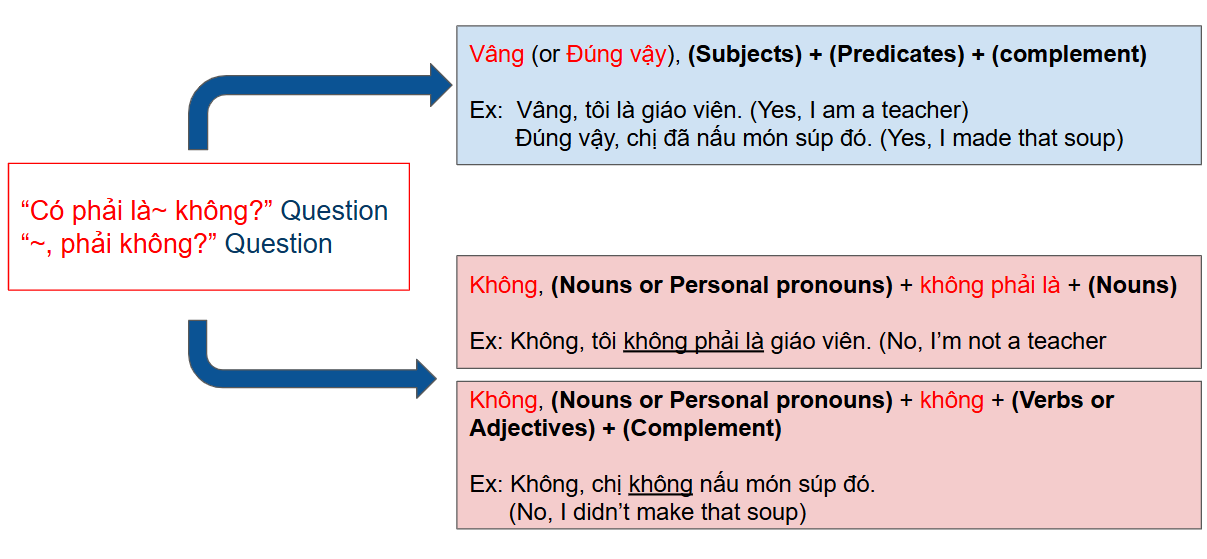In Lesson 10, we learned about interrogative sentences using “có~không?”. In this lesson, we will study other commonly used question forms, specifically tag questions.
The “có phải là ~ không?” Question Form
Structure:

Explanation :
- The word “phải” means “correct” or “right”.
- The “có phải là ~ không?” structure is used when you want to confirm whether something is correct or not, similar to “Is it…?” in English
Example Sentences:
① Anh có phải là anh John không? (Are you Mr. John?)
② Kia có phải là nhà của chị không? (Is that your house?)
③ Bức tranh này có phải là em vẽ không? (Did you draw this picture?)
④ Món này có phải là anh nấu không? (Did you cook this dish?)
Vocabulary Notes:
- Bức tranh = Picture, painting
- Vẽ = To draw
The “~, phải không?” Question Form
Structure:
Explanation:
This form is used similarly to “có phải là ~ không?”, but it is a different way of asking for confirmation.
By adding “phải không?” at the end of a declarative sentence, you create a tag question similar to “isn’t it?” or “right?” in English.
Example Sentences:
① Chị là người Pháp, phải không? (You are French, aren’t you?)
② Đây là cây bút của anh, phải không? (This is your pen, right?)
③ Anh sống ở Hà Nội, phải không? (You live in Hanoi, don’t you?)
How to Answer These Questions

Example Conversation:
| Adam |
Chào chị. Tôi là Adam. Rất vui được gặp chị. |
| Linh | Chào anh Adam. Rất vui được gặp anh. Anh có phải là người Pháp không? Hello Mr.Adam . Nice to meet you too. Are you French? |
| Adam | Vâng, tôi là người Pháp. Chị cũng là người Pháp, phải không? Yes, I’m French. You’re also French, right? |
| Linh | Không, tôi không phải là người Pháp. Tôi là người Việt Nam. No, I’m not Japanese. I’m Vietnamese. |
